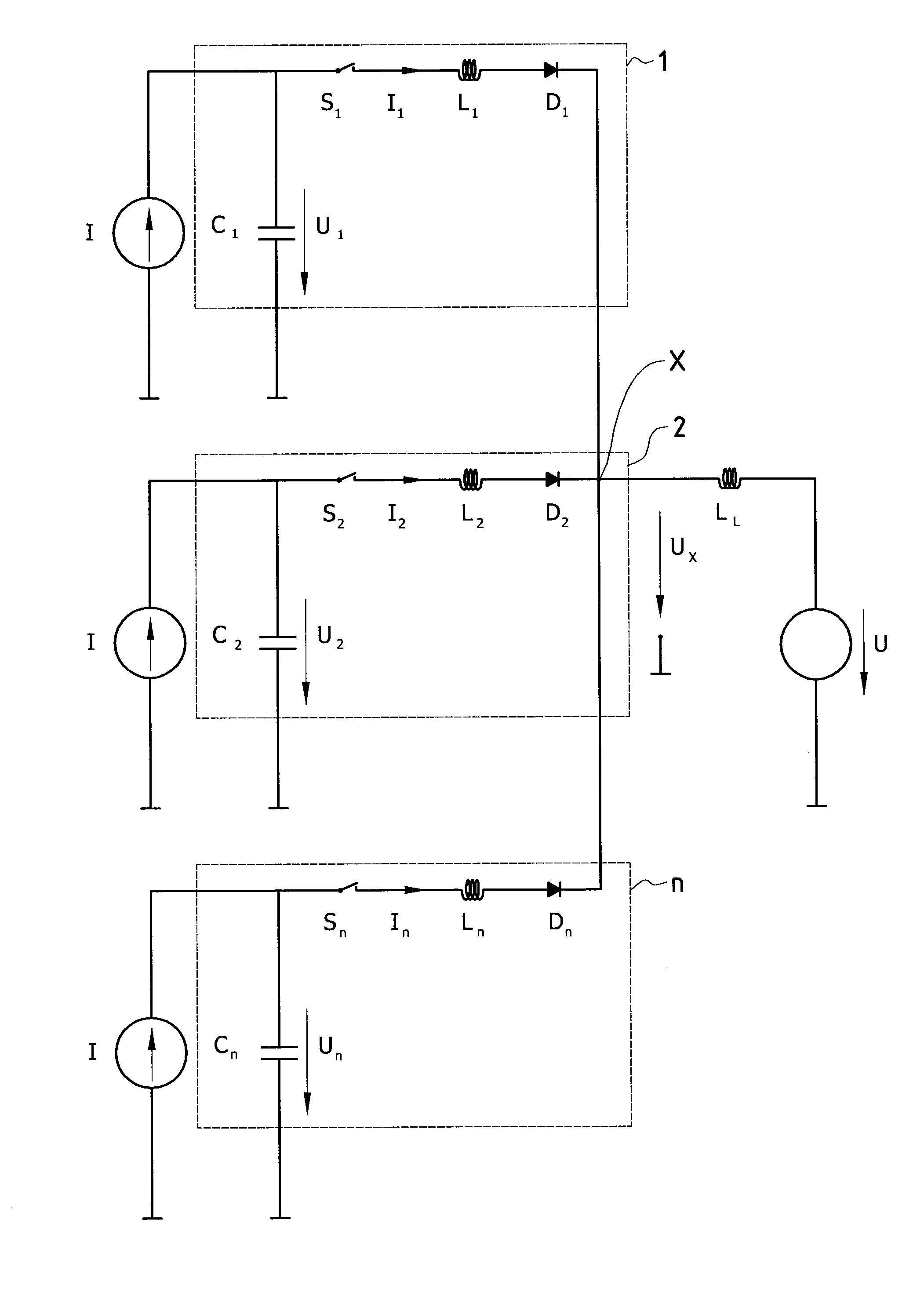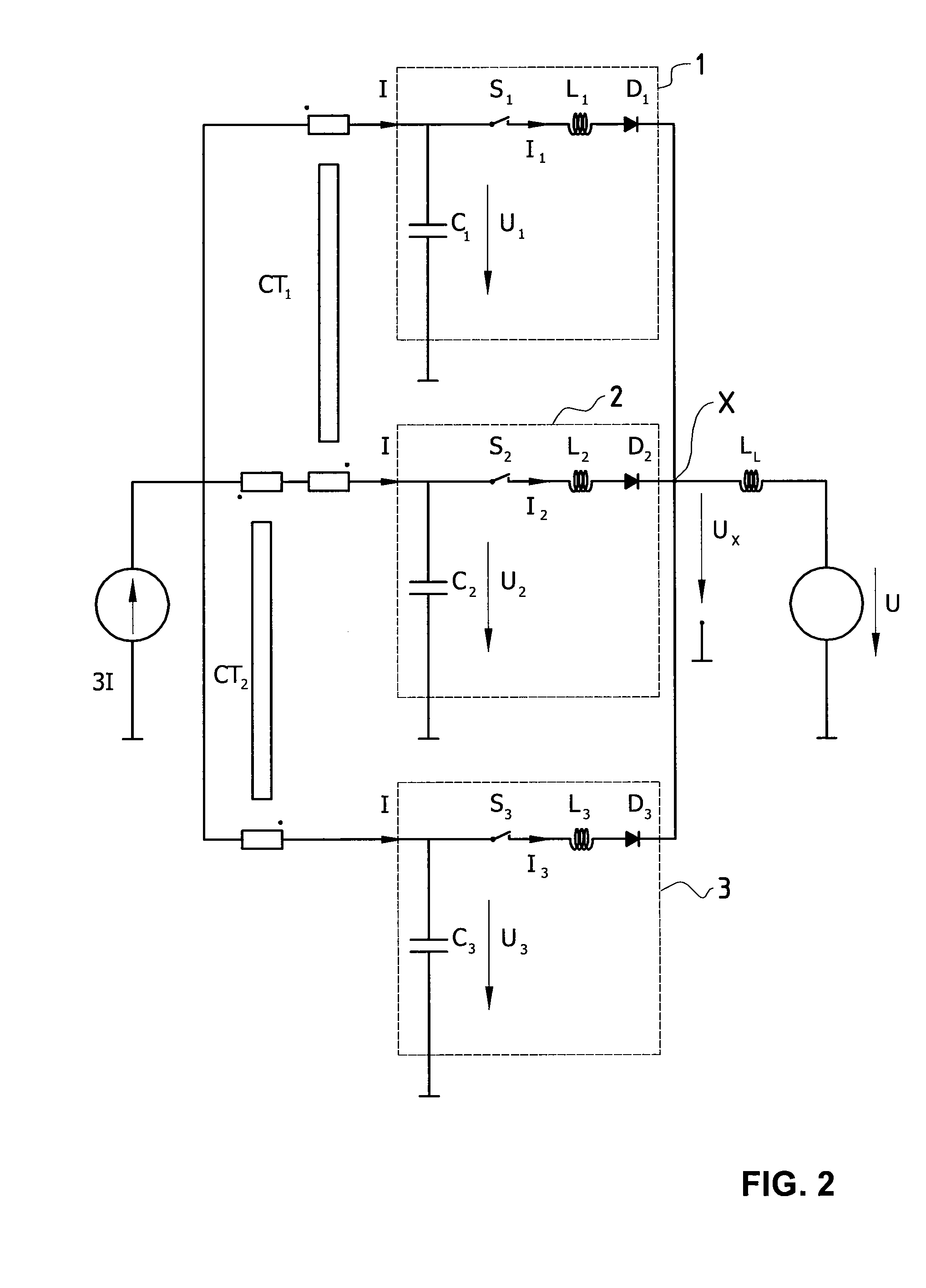Multiphase soft-switched dc-dc converter
a dc-dc converter and multi-phase technology, applied in the direction of dc-dc conversion, power conversion systems, instruments, etc., can solve the problems of large switching losses in semiconductor switches, need for larger output filters, and the need for relatively large capacitors in the resonant converter circui
- Summary
- Abstract
- Description
- Claims
- Application Information
AI Technical Summary
Benefits of technology
Problems solved by technology
Method used
Image
Examples
Embodiment Construction
[0034]FIG. 1 illustrates a simplified abstraction of the principle behind the present invention. The circuit shows three converter circuits (1,2,n) connected to a common load circuit. Each converter circuit comprises a capacitor (C1, C2, Cn), a switch (S1, S2, Sn), an inductance (L1, L2, Ln) and an output diode (D1, D2, Dn). The voltages across the capacitors are U1, U2 and Un respectively.
[0035]The circuit of FIG. 1 shows each converter circuit having a separate ideal current source I, however it will be understood that they may equally share a common current source. Such an arrangement is shown in FIG. 2, which shows three converter circuits sharing one ideal current source (3I) by means of two ideal current transformers (CT1, CT2) to form three ideal current sources (I). In the general case, with n converter circuits in parallel, (n−1) ideal current transformers would be required.
[0036]FIG. 3 illustrates a galvanically isolated version of the circuit of FIG. 2. In this case, the ...
PUM
 Login to View More
Login to View More Abstract
Description
Claims
Application Information
 Login to View More
Login to View More - R&D
- Intellectual Property
- Life Sciences
- Materials
- Tech Scout
- Unparalleled Data Quality
- Higher Quality Content
- 60% Fewer Hallucinations
Browse by: Latest US Patents, China's latest patents, Technical Efficacy Thesaurus, Application Domain, Technology Topic, Popular Technical Reports.
© 2025 PatSnap. All rights reserved.Legal|Privacy policy|Modern Slavery Act Transparency Statement|Sitemap|About US| Contact US: help@patsnap.com



